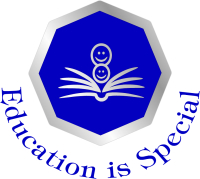How do I say good-bye to kids that have been part of my every thought for the past three years? I have become a person in their lives that has not let them down. I have taught them that school is okay. That learning can happen and can even be fun! When we are in class, I think that for a little while we all forget our out of school circumstances. I think that we all have hope for brighter futures When we are together we work hard to make sense of the Common Core Standards in all of our subjects.We don't bad mouth the Common Core because there are many solid learning objectives in them. Objectives that may open our minds to think deeply and critically. Objectives that will keep the kids talking to each other long after the school day has ended. Isn't this what we want?
Tonight I am thinking critically and deeply. I didn't expect opportunity to knock mid school year. It's suppose to knock during the summer so there is a clear cut beginning and ending to the school year. Leaving mid school year seems unfair to my students but that's when my opportunity came. The trust that I have built with these students is partly due to the fact that I am always fair to "my kids". They are my kids! I teach them, I discipline them, I do laundry for them, I feed them, comb their hair, call their parents with good calls and sometimes not so good calls. Their families are my families too. I understand that raising a family is difficult and expensive, and more so if there is only one parent. We all do the best we can.
So what do I do? Do I answer the door with opportunity knocking? Do I break the news to my kids that they have to finish the year with someone new, causing sadness and anxiety in all of us. Or, do I say no to this opportunity and stay here until June hoping that opportunity comes knocking at my door again. This decision doesn't affect only me, yet the decision is only mine to make.
Today I handed in my resignation. I had to do it quickly, without thinking too much about it. If I thought too much then I would have been overwhelmed with heartache over leaving a group of terrific kids! Quite honestly I learned more from them than they ever did from me. I have learned to never pass judgement on any of my students or their parents. Their biggest feat of the day is getting themselves to school. Outside of school they are often faced with adult problems and situations that deeply affect them but because they are children they are expected to go with the flow. School is their hope and mine that they can each ultimately find their own way with the skills they have learned in life and in school and run with it.
Four days left. I have seen signs that "my kids" are anxious with my departure. We have talked a lot about it. They know that I care deeply about them. They know that I expect their full cooperation with their new teacher. I am hoping that technology and the U.S. Postal Service can keep us all in touch for many years to come. I'm hoping that their new teacher and I can connect our classrooms via Skype and do a lesson together. Perhaps all of my kids can make new friends long distance. Isn't technology great?
Three and a half years ago, I took on a class full of holes and with my students, colleagues, and a few twitter friends made it whole. As I leave, it is my goal to find a way to keep each child in it whole. After I leave, I am no longer their teacher. I can only hope that I was able to plant enough seeds to keep these kids moving forward, beyond their personal circumstances, and to follow their wildest dreams! To the kids in room 215 a piece of my heart will always be with you.











































